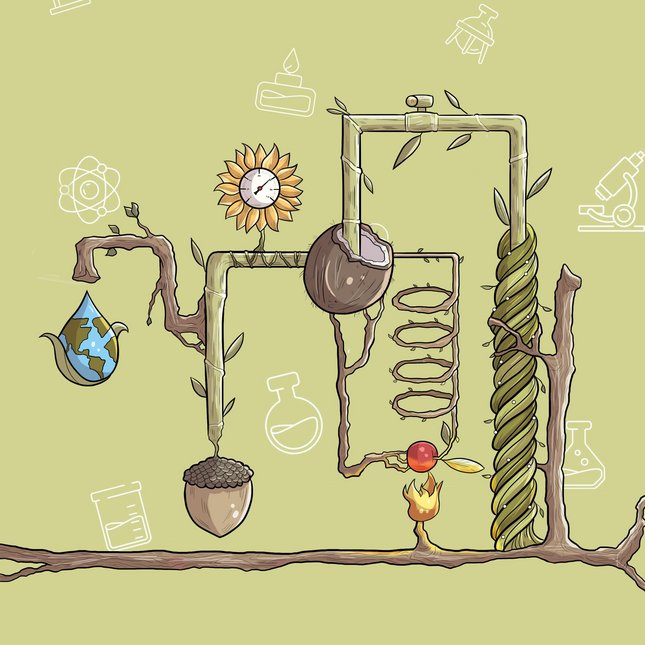Evaluating new processing platforms for pharmaceutical production
Olivia Morales Gonzalez defended her thesis at the department of Chemical engineering & Chemistry on July 5th 2022.

The pharmaceutical industry is one of the most relevant sectors in today’s economy. For more than a century, pharmaceutical production has relied on batch production, but this lacks the agility, flexibility, and robustness to comply with today’s challenges. With an exponentially growing population and rapidly diminishing resources, the pharmaceutical industry is confronted with public health threats such as drug shortages. In addition to the limitations of batch technology to increase production, the pharmaceutical industry is responsible for high amounts of waste. For her PhD research, Olivia Morales Gonzalez looked at new process approaches that can overcome these limitations in the pharmaceutical industry.
Alternative manufacturing platforms are needed to overcome present and future environmental and economic challenges in the pharmaceutical industry. Olivia Morales Gonzalez has investigated new process platforms, namely reactive extraction with ionic liquids, polymeric nanoreactors, and novel process windows.
Morales Gonzalez carried out life cycle assessments and techno-economic evaluations to identify hot spots in these process concepts before their industrial implementation, and from her research Morales Gonzalez suggests a number of optimizations.
Continuous processing
Firstly, Morales Gonzalez assessed novel process windows by looking at the life cycle assessment of the production of vitamin D3. Novel process windows are a new way of process design to boost micro process technology for the production of high-added value fine chemicals using harsh conditions (e.g. high temperature and pressure). This vitamin was chosen for the research because it is a very common and necessary nutrient produced and consumed worldwide.
Moreover, the novel process windows were benchmarked against multiple batch processes. The vitamin D3 is produced continuously in microreactors (i.e. microflow) and combines UV photoirradiation and high pressure and high temperature (photo irradiation- high pressure and temperature) processing. Then, continuous crystallization purifies the product.

The processes were modeled with ASPEN Plus process simulation software using foreground data from the experimental continuous setup, and background data from different patents. The environmental impact of the continuous process is mainly due to use of acetonitrile and methyl tertiary-butyl ether (t-BME), which are both solvents.
In comparison with the batch processes, the continuous process offers a significant reduction in terms of environmental impact. Even considering the high recycling rates (95%) of solvent in batch scenarios, the impact is at least double. Moreover, it is necessary to recycle them without any additional purification steps.
Techno-economic evaluation
Next, Morales Gonzalez conducted a techno-economic evaluation of the production of Cross-Linked Enzyme nano-Aggregates (c-CLEnA) at the laboratory scale. These are bowl-shaped polymeric vesicles were used as supports, with the advantage of high activity retention and ease of recycling.
The support represents a large fraction of the cost in the case of enzymatic processes. Thus, Morales Gonzalez assessed the production to find hot spots that could be optimized. The estimated cost per 0.5 ml of CalB-loaded c-CLEnA is €139, and this is mainly driven by the capital expenditures (costs related to purchasing fixed assets such as equipment). This cost was benchmarked against traditional cross-linked supports, whose production is simpler compared with c-CLEnA, but more leakage results. Morales Gonzalez found that c-CLEnA needs to be recycled around 20 times to obtain any sort of economic benefit. Finally, process changes were discussed regarding the impact on the production cost.
Functional Solvent Factory
Finally, the concept of the Functional Solvent Factory (FSF) is introduced as well as solubility, which is its main KPI. A case study (for the synthesis of benzyl azide) assessed the combined use of reactive extraction with ionic liquids. This case study was based on literature due to the low technology readiness level (TRL) of this concept. Two models for the FSF were created using ASPEN Plus software. Then, the concept was benchmarked against two other process alternatives, state-of-the-art (batch) and solvent-less (continuous). A life cycle assessment was conducted to compare and identify hot spots. Hot spots are the processes and activities in the life cycle that have a large contribution to the total environmental impact. Identifying them helps in the decision making process of designing optimal production processes.
Results show that the environmental impact of both FSF cases is larger than the benchmark cases. In particular, the solvent-less case resulted in the lowest environmental impact. Despite the results, the research focus was on collecting the data needed for further stages of development, and for other solvent factories.
To bring this platform to market, it is necessary to optimize the use of ionic liquids, low amounts of solvent usage, low processing temperatures, high recyclability, and avoid contamination of the ionic liquids. Morales Gonzalez concludes that these performance indicators will influence future developments of this platform.
Morales Gonzalez also addressed the uncertainties of the previous case study, particularly the FSF scenarios. Applying an life cycle assessment at early stages of development is more challenging compared with non-commercialized technologies. Many uncertainties arise from the missing or inaccurate data, temporal and spatial variability, and inaccuracy of the models among other factors.
To address these uncertainties, stochastic parameters with probability distributions instead of fixed values and propagation of the sampling were conducted using Monte Carlo simulations. Then the overlap area approach was used to assess the results of these comparative LCAs. This created a different result compared to the determinist LCA, as the similarity in both cases is higher in comparison to previous results. Moreover, it highlighted the need to address the correct use of ionic liquids.
More information
Olivia Morales Gonzalez defended her thesis titled Ex-ante life cycle evaluation of new process platforms: for pharmaceuticals cascades in flow on July 5th, 2022. She was supervised by Prof.dr.eng. Fausto Gallucci and Prof.dr. Volker Hessel.
Latest news


![[Translate to English:] [Translate to English:]](https://assets.w3.tue.nl/w/fileadmin/_processed_/e/0/csm_BvOF%202019_1031_BHF%20license%20TUe%20ILI%20copy_8a50884392.jpg)